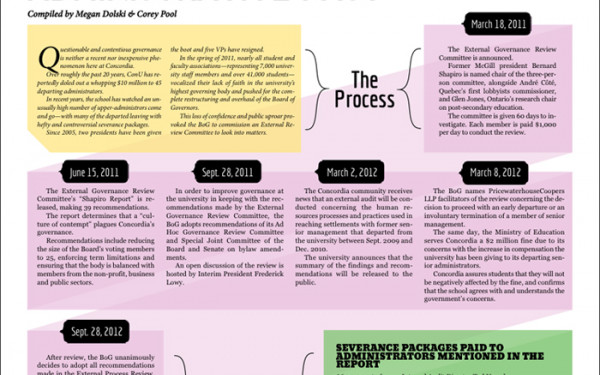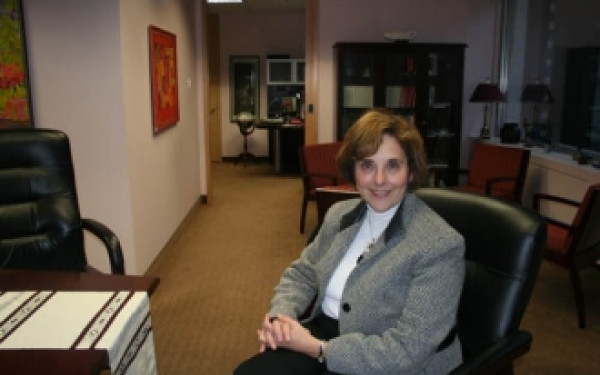Performing the Psyche
‘Rouge Mekong’ Breaks New Ground in Psychological Immersion
Journeying to the centre of a character’s mind has become a well-worn trope in the film world—from traipsing haphazardly through dreams in Inception to getting high on DMT first-person in Enter the Void, directors often try to go “deeper” into the inner workings of the mind with different experimental techniques.
The revived immersive piece Rouge Mékong makes these techniques look like cheap parlour tricks.
For starters, any work shown in the SATosphere literally goes beyond your standard 16×9 projected film. The films surround you in the full-dome environment, screening everywhere but the floor—only by lying on your back can you take in the full scope.
Rouge Mékong, running from April 2 – April 16 in the SATosphere at the Société des Arts Technologiques, is a true baptism into the mind of Sarah Lebovitz, a cryptically poetic Jane Doe who the audience becomes intimately familiar with.
Walking into the dome theatre for the piece felt like equal parts uncovering a treasure trove of long-forgotten beloved childhood items and elbowing your way between lovers embracing under the sheet. From the open, utilitarian space of the theatre—with no stage and no seating—sprouted Sarah’s modest and warm bedroom adornments. The centerpiece was a really large bed, with a bureau, couch, antique television set and circles of small suitcases artfully arranged around the spheatre (sphere theatre—mind blow initiated).
What began as tentatively milling through the space like art gallery patrons quickly gave way to rigorous exploration, plundering the interior space. The level of detail that went into the production design was very impressive—photos and makeup scattered on the bureau, underwear, journals and other keepsakes in the glowing suitcases. It felt like a real, authentic bedroom. With the conspicuous absence of an occupant, the intimate artifacts peppered around the room evoked twinges of nostalgia, like the space was a mausoleum of memories.
Teasing out the little details in the set felt like trying to solve a mystery, and I realized audience participation wasn’t just an added novelty to the show—it made the show what it was. Theatre-goers splayed themselves onto Sarah’s bed, pawed through her clothes, read her books. It seemed the creators of Rouge Mékong didn’t want us to be just voyeurs of Sarah’s experience, but to physically ease ourselves into her psyche in our time and in ways of our choosing.
A murky, ambient piano soundtrack set the tone for the initial exploration. The lights eventually dimmed to seal the illusion and produce a 360-degree rendering of Amélie-esque bedroom walls. This eventually transitioned to the cinema component of the piece, following a loose narrative of Sarah enduring a breakup and moving in wanderlust fashion to an unspecified location in Asia.
The films projected in the dome had the fleeting feeling of memories or dreams—quick cuts jumping through time and space, from candid close-ups of Sarah to shaky first-person views of bustling city streets. Some of these scenes were displayed through a ring of shimmering light in the dome, like gazing through a wormhole, while others had the grainy aesthetic of a flickering 16mm film reel projection.
Sarah’s enigmatic poetry began around this time, and her dialogue (translated to me in real time by my superior French-speaking girlfriend) usually raised more questions than answers. She implored the audience to “open our eyes,” and described her life and feelings as if she were merely murmuring to herself, alone at night. But of course, Rouge Mékong isn’t as interested in narrative and a typical story arc as it is in entrenching its audience in the inner world they’ve composed.
Film, set design and music weren’t the only elements of the show—the physical form of Sarah herself made appearances throughout. There were a number of Sarah manifestations, and it was difficult to discern exactly how many actresses there were. They were like anonymous shape-shifters in the theatre—often only through lighting and musical cues did one of the Sarahs reveal herself and become distinct from the crowd. Trying to keep track of them after their brief exposures was like a futile human shell game.
The Sarahs performed passively and solo at first, but as the show built momentum multiple Sarahs performed at once and actively approached audience members. I felt the subsequent adrenaline rush while eyeing the Sarahs gliding through the crowd, riding out the anxiety of possibly entering the show myself, spectator to the spectated. But strangely, a large part of me actually wished that Sarah would zero in on me. Hypnotized, a voice in me yearned for her to shatter that final barrier and physically touch me. In a show that collapsed the fourth wall from the start, it destroyed the final remnants of singularity from Sarah in its climax.
Rouge Mékong was able to capture and express the essence of consciousness in an unprecedented, unparalleled way. It successfully transcended the sum of its distinct media (cinema, music and theatre) to create something utterly unique, that intangible deeper element that ambitious filmmakers often seek. While the show may be too jarring and perhaps psychologically and emotionally heavy for a first date, it does feel like a form of escapism—literally becoming someone else for an hour, existing solely within the mind of the elusive Sarah Lebovitz.
Lying alone in your bed at night, thinking back on your life and the choices you’ve made is something we all inevitably do. This intensely personal, introspective act is brought to beyond life-size in Rouge Mékong. By eliminating the fourth wall and utilizing the space of the SATosphere in new and brilliant ways, Rouge Mékong offers a psychological experience unlike any other.

_600_832_s.png)

_600_375_90_s_c1.jpg)
2_600_375_90_s_c1.jpg)

